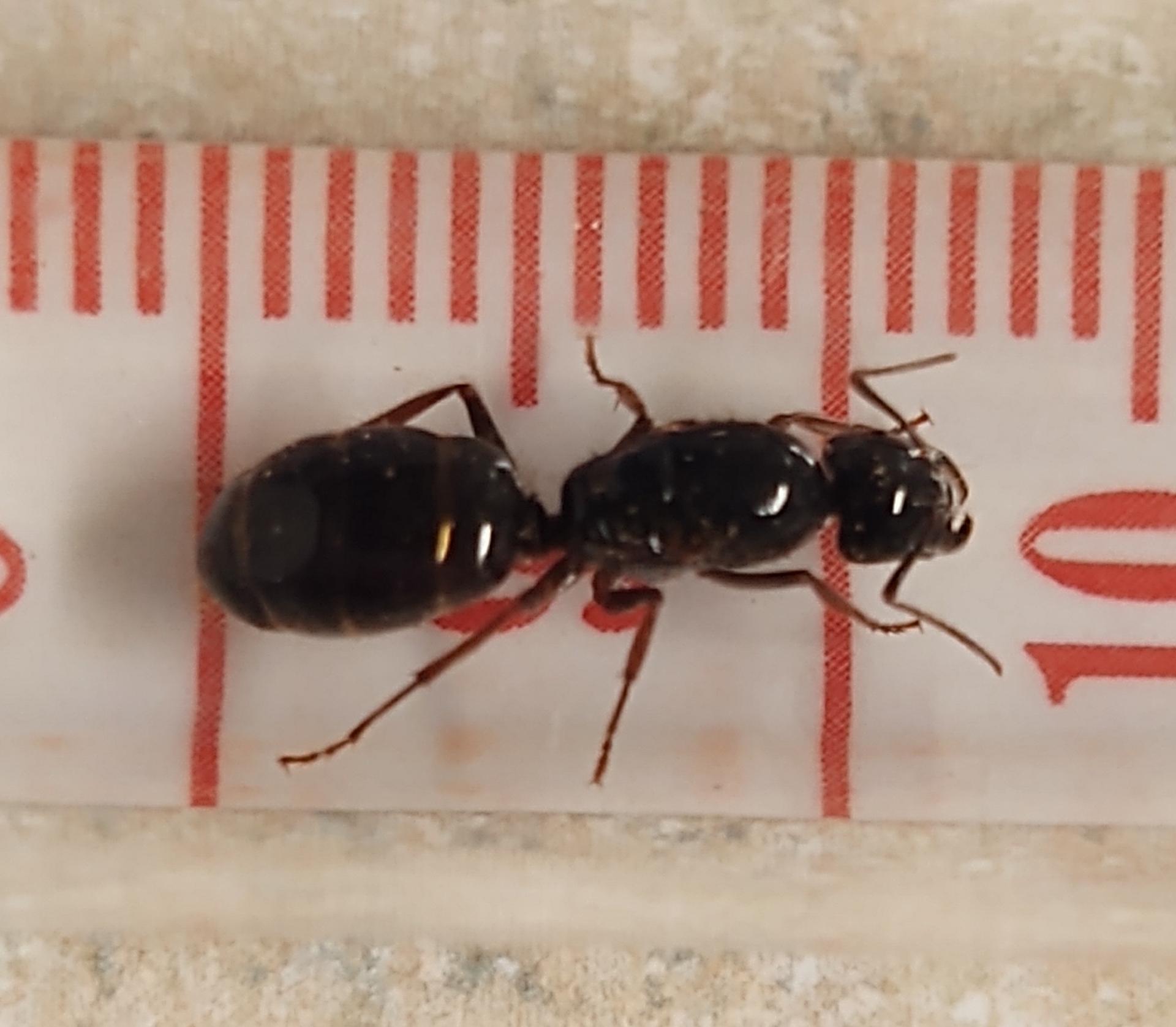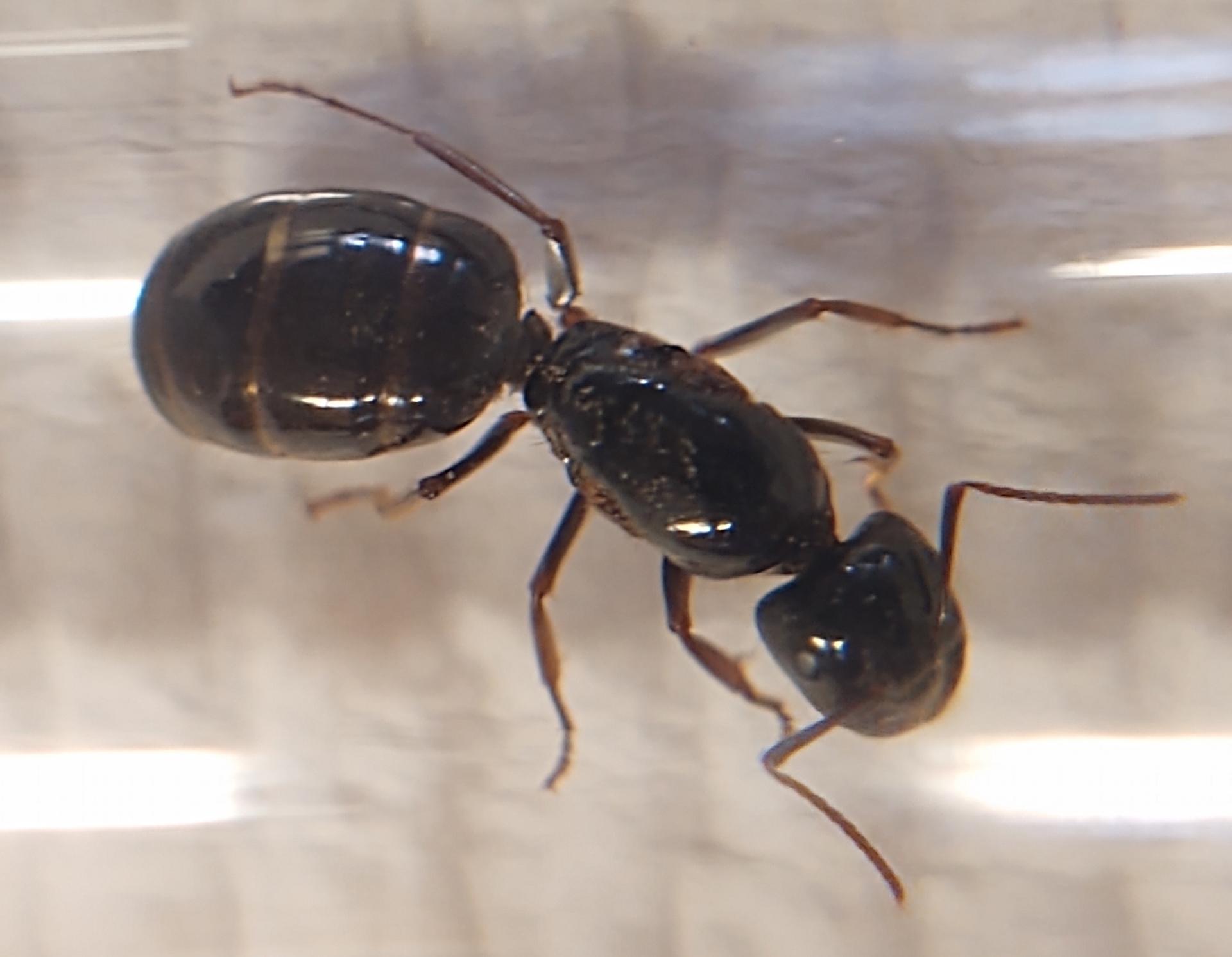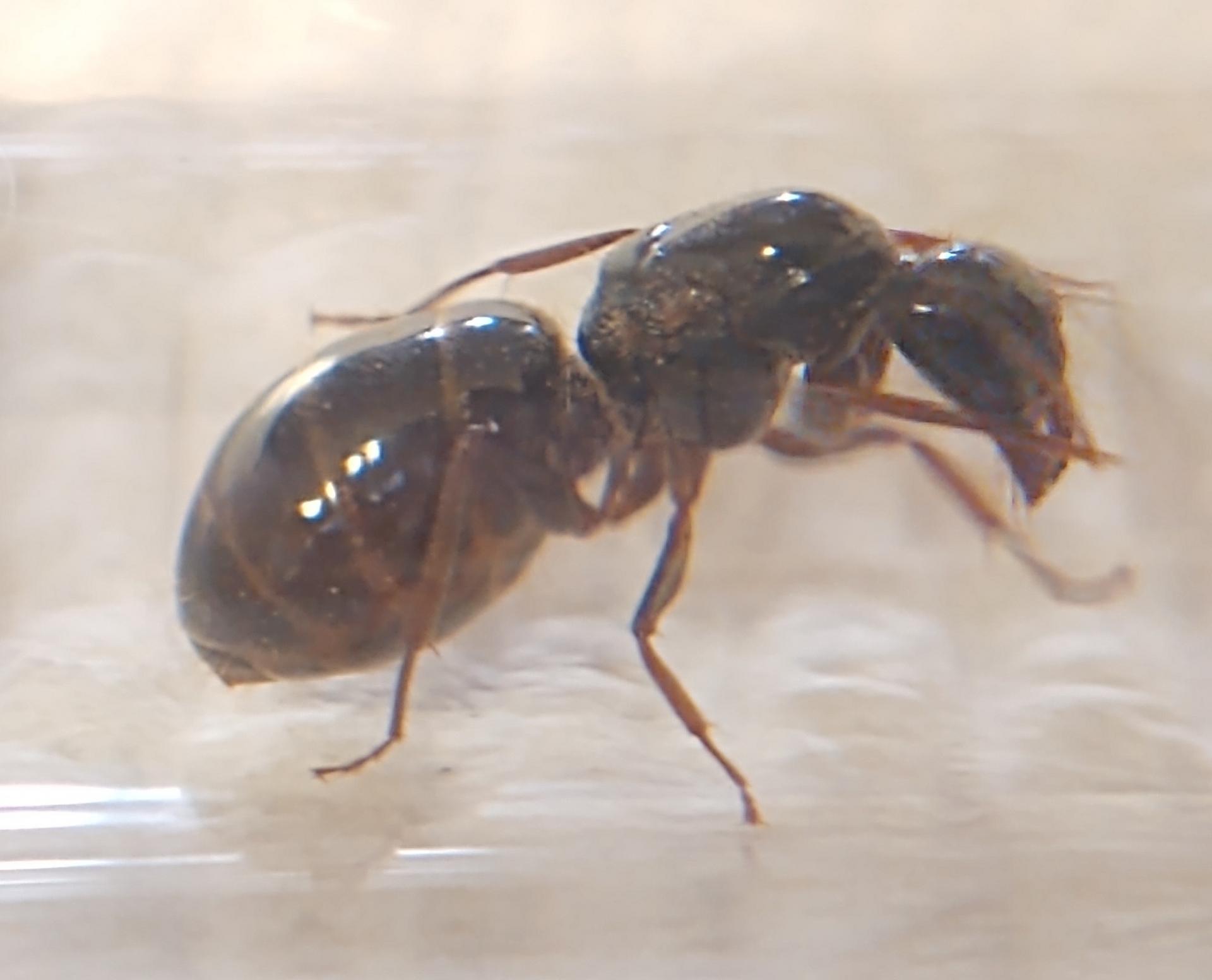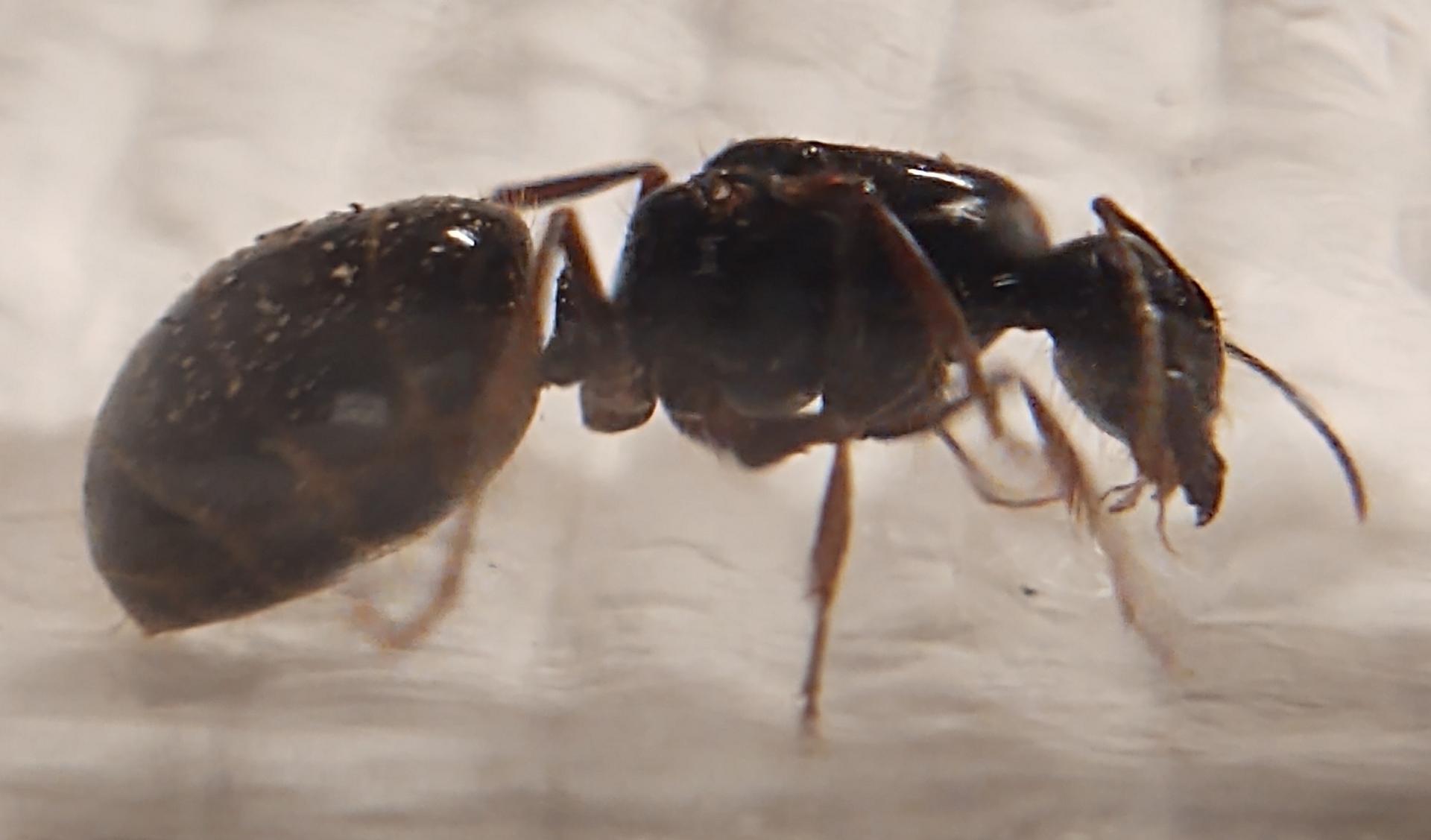- Formiculture.com
- Forums
- Gallery
- Members
- Member Map
- Chat
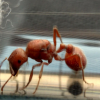
Southern California ID, Camponotus?
Started By
DeviAnt
, May 3 2020 7:22 AM

Best Answer NickAnter , May 3 2020 - 8:02 AM
Looks like either Camponotus us-ca01, or Camponotus anthrax. Excellent find!
Go to the full post
6 replies to this topic
#1
 Offline
-
Posted May 3 2020 - 7:22 AM
Offline
-
Posted May 3 2020 - 7:22 AM
I caught 7 of these 9 days ago and still no eggs. I gave them a small drop of honey in their test tube and kept them in a dark place. I assumed Camponotus but I'm a rookie. ID and advice on getting them to lay eggs?
1. Location (on a map) of collection: Santa Ana Mountains
2. Date of collection: 4/24/20
3. Habitat of collection: dry brush under rock
4. Length (from head to gaster): 12-13mm
5. Color, hue, pattern and texture: dark and shiney
6. Distinguishing characteristics: none
Poor lighting in photos but I don't want to disturb again.
Thanks in advance.
1. Location (on a map) of collection: Santa Ana Mountains
2. Date of collection: 4/24/20
3. Habitat of collection: dry brush under rock
4. Length (from head to gaster): 12-13mm
5. Color, hue, pattern and texture: dark and shiney
6. Distinguishing characteristics: none
Poor lighting in photos but I don't want to disturb again.
Thanks in advance.
#2
 Offline
-
Posted May 3 2020 - 8:02 AM
Best Answer
Offline
-
Posted May 3 2020 - 8:02 AM
Best Answer
Looks like either Camponotus us-ca01, or Camponotus anthrax. Excellent find!
- TennesseeAnts likes this
Hi there! I went on a 6 month or so hiatus, in part due, and in part cause of the death of my colonies.
However, I went back to the Sierras, and restarted my collection, which is now as follows:
Aphaenogaster uinta, Camponotus vicinus, Camponotus modoc, Formica cf. aserva, Formica cf. micropthalma, Formica cf. manni, Formica subpolita, Formica cf. subaenescens, Lasius americanus, Manica invidia, Pogonomyrmex salinus, Pogonomyrmex sp. 1, Solenopsis validiuscula, & Solenopsis sp. 3 (new Sierra variant).
#3
 Offline
-
Posted May 3 2020 - 8:15 AM
Offline
-
Posted May 3 2020 - 8:15 AM
Thanks, I thought anthrax too after looking through pictures. I can't find much info about them. You know any good sources?
#4
 Offline
-
Posted May 3 2020 - 8:18 AM
Offline
-
Posted May 3 2020 - 8:18 AM
I would just treat them like any other Camponotus. Standard test tube setup. Maybe some dirt in there if you want to.
Hi there! I went on a 6 month or so hiatus, in part due, and in part cause of the death of my colonies.
However, I went back to the Sierras, and restarted my collection, which is now as follows:
Aphaenogaster uinta, Camponotus vicinus, Camponotus modoc, Formica cf. aserva, Formica cf. micropthalma, Formica cf. manni, Formica subpolita, Formica cf. subaenescens, Lasius americanus, Manica invidia, Pogonomyrmex salinus, Pogonomyrmex sp. 1, Solenopsis validiuscula, & Solenopsis sp. 3 (new Sierra variant).
#5
 Offline
-
Posted May 3 2020 - 8:21 AM
Offline
-
Posted May 3 2020 - 8:21 AM
Ok, thanks again.
#6
 Offline
-
Posted May 3 2020 - 9:11 AM
Offline
-
Posted May 3 2020 - 9:11 AM
No North American Camponotus vary that drastically when it comes to care, no matter where they're from or what they look like.
- DeviAnt likes this
"God made..... all the creatures that move along the ground according to their kinds (including ants). And God saw that it was good. Genesis 1:25 NIV version
Keeping:
Formica cf. pallidefulva, cf. incerta, cf. argentea
Formica cf. aserva, cf. subintegra
Myrmica sp.
Lasius neoniger, brevicornis
#7
 Offline
-
Posted May 3 2020 - 10:06 PM
Offline
-
Posted May 3 2020 - 10:06 PM
1 user(s) are reading this topic
0 members, 1 guests, 0 anonymous users



